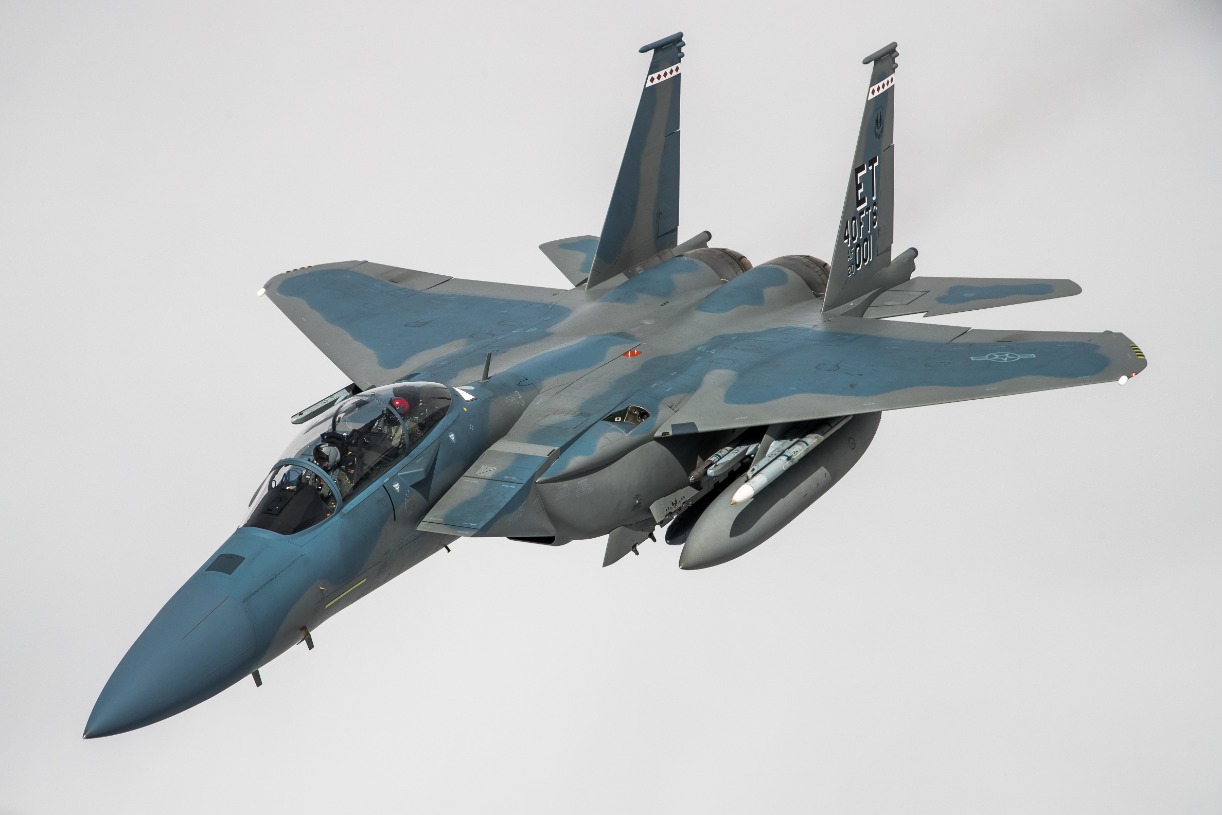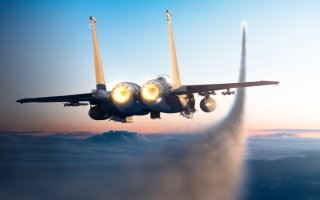F-15EX Eagle II Fighter Can't Hit Mach 3 Afterall
Just last week, aerospace giant Boeing announced that its F-15EX Eagle II jet fighter had the potential to reach nearly Mach 3 – a speed only a few aircraft powered by gas turbines have ever achieved. However, that might have been a little bit overstated.
Summary: Boeing's F-15EX Eagle II, boasting remarkable aerodynamic efficiency and powered by twin GE F110-GE-229 engines, initially claimed to reach speeds nearing Mach 3. However, Boeing program manager Rob Novotny later corrected this, stating the top speed is Mach 2.497, aligning more closely with the Air Force's official "Mach 2.5-plus" rating. Despite the speed revision, the F-15EX remains a formidable multirole fighter, featuring advanced technology and a significant payload increase over its predecessors. It requires minimal transitional training, sharing around 70% of its parts with current models, ensuring ease of integration into existing Air Force infrastructure.
Not So Fast – Boeing Clarifies Speed Claim of the F-15EX Hitting Mach 3
Just last week, aerospace giant Boeing announced that its F-15EX Eagle II jet fighter had the potential to reach nearly Mach 3 – a speed only a few aircraft powered by gas turbines have ever achieved.
As previously reported by Harrison Kass for The National Interest, "This speed is achievable in a 'clean' configuration, without external add-ons, emphasizing the jet's aerodynamic efficiency. With twin GE F110-GE-229 engines providing 29,500 pounds of thrust each, the F-15EX's speed approaches that of historical aircraft like the SR-71 Blackbird, albeit with limitations."
Those limitations could include cutting the airplane's fuel load by half or more to save weight to achieve Mach 2.9 speed, or beyond, yet, it would be extremely stressful on the aircraft's engines. In other words, it sounded as if the Eagle II could truly soar at high speeds – but clarifications have since been made.
Aviation Week & Space Technology has since reported that Boeing program manager and former test pilot Rob Novotny said he misspoke when he said the top speed of the F-15 is Mach 2.9. Novotny added that the actual top speed is Mach 2.497, although the Air Force's official fact sheet for the F-15E still says the jet is capable of "Mach 2.5-plus."
As Eric Tegler of Forbes.com also reported, "Top speed claims and the attention attached to them have always been a bit misleading. The highest velocity a fighter can achieve in level flight or 'controlled' flight is most often not as important as what it can do in terms of maneuvering, employing weapons, or cloaking itself from detection on the way there."
Those are important points to consider, and the F-15EX Eagle II is still a fast and capable fighter – just not as fast as Mach 3.
The F-15EX Eagle II – What You Need to Know
The F-15EX is a two-seat all-weather, multirole fighter that offers enhanced capabilities that are completely unique to the U.S. Air Force. It includes fly-by-wire flight controls, new weapons stations, a new electronic warfare suite, advanced radar and computer, conformal fuel tanks, and a strengthened airframe.

The improved F-15EX also features a deep magazine that will allow it to carry a load of advanced weapons – yet with a 28 percent larger payload than the F-15E. At the same time, the fighter will also require only minimal transitional training and little additional manpower from the older versions of the F-15. According to the Air Force, it has also required little to no infrastructure changes.
The Air Force has estimated that the F-15EX fighter shares about 70 percent of parts with the current F-15Cs and F-15Es it will replace. In addition, the original production lines in St. Louis still in place, while the aircraft's training facilities, maintenance depots, and other infrastructure can be also be readily shifted to F-15EX support.

Author Experience and Expertise: Peter Suciu
Peter Suciu is a Michigan-based writer. He has contributed to more than four dozen magazines, newspapers, and websites with over 3,200 published pieces over a twenty-year career in journalism. He regularly writes about military hardware, firearms history, cybersecurity, politics, and international affairs. Peter is also a Contributing Writer for Forbes and Clearance Jobs. You can follow him on Twitter: @PeterSuciu. You can email the author: [email protected].


